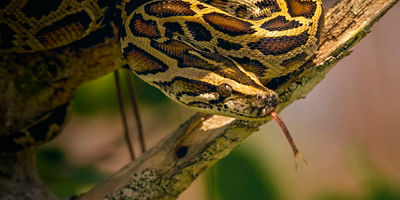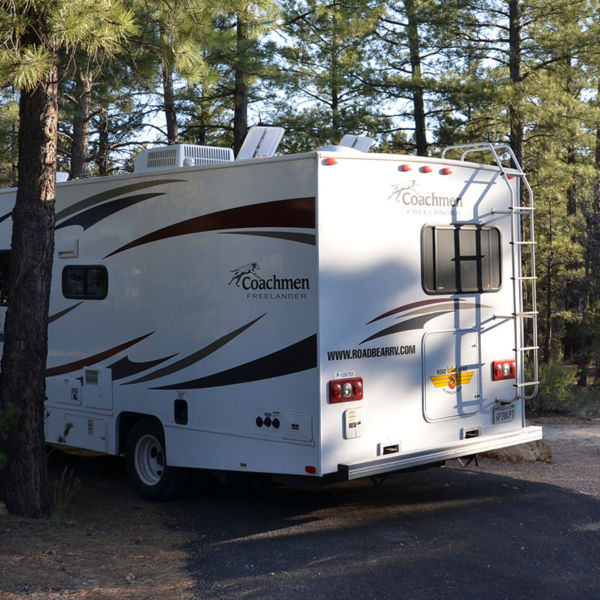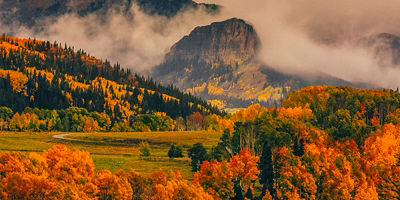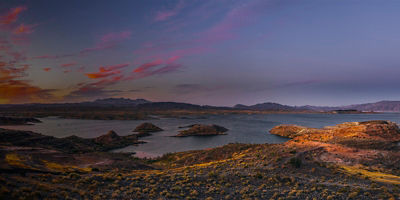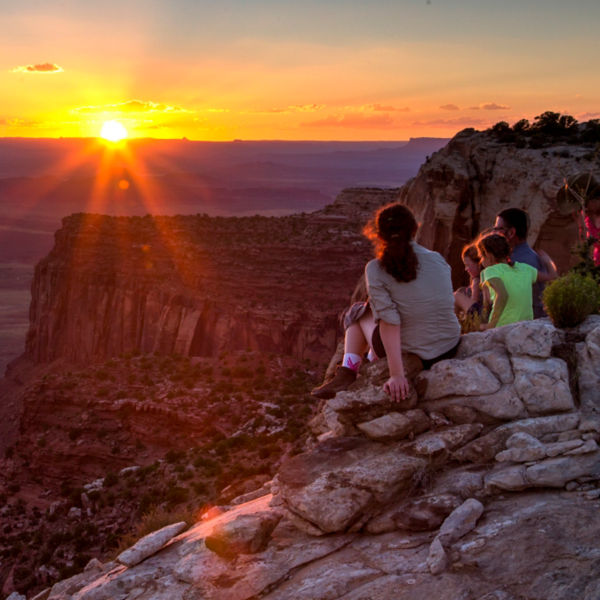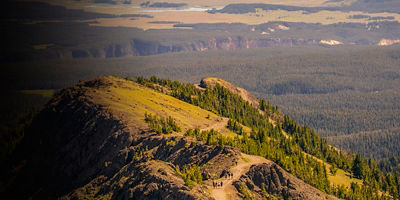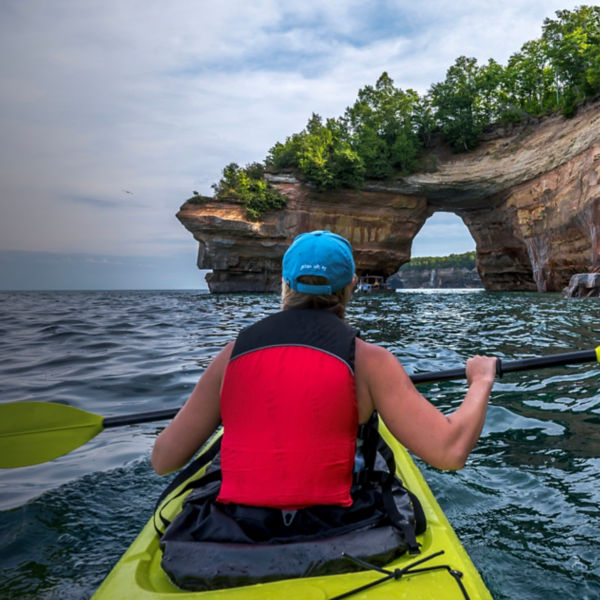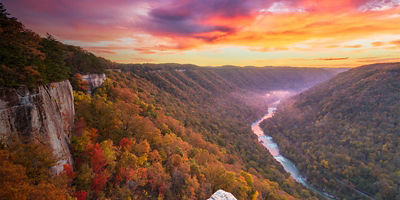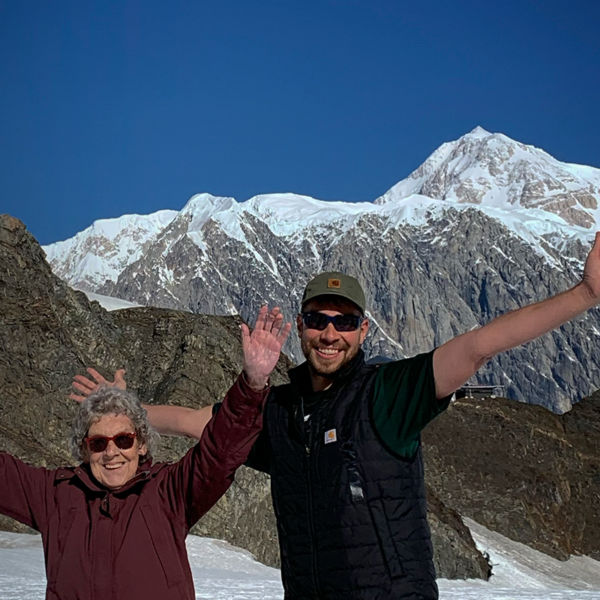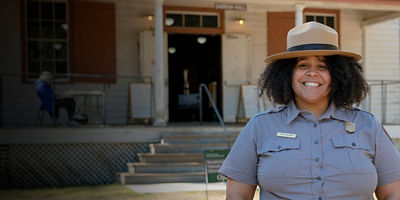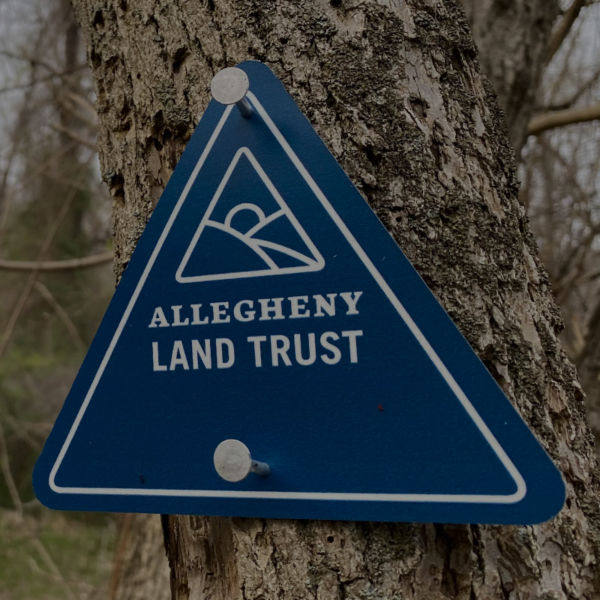
The jagged, ice-carved mountains that fill the heart of Glacier National Park rival any peaks in the world for sheer alpine beauty—and that’s just the start of what this dramatic park in northwestern Montana offers. Situated on the Continental Divide at the “crown of the continent,” Glacier includes cobalt lakes, gushing waterfalls, lush valleys, and a stunning list of wildlife inhabitants that features grizzly bears, mountain goats, wolverines, bighorn sheep, and many more.
Glacier tops many a destination life-list, and for good reason. With more than 700 lakes, 1,500 square miles, and 700-plus miles of hiking trails, you won’t run out of places to explore. Even if you did, visiting Glacier is a two-for-one experience, as it borders Waterton Lakes National Park just across the border in Canada to form Glacier International Peace Park.
The Lay of the Land
Glacier National Park owes its spectacular landscape to millions of years’ worth of mountain uplift and erosion followed by glacial sculpting. Visiting the park provides a master class in glacial terrain: Massive glaciers bulldozed and scraped the rock here, leaving behind telltale moraines, hanging valleys, aretes, and cirques.
The park is famous for its remaining glaciers, which are receding as climate change warms the planet. There are about 26 glaciers in the park today, down from 80 at the end of the Little Ice Age in 1850. Some glaciers can be spotted from pullouts on the road (like Jackson Glacier), while others require a strenuous hike to reach (Sperry Glacier, Grinnell Glacier).
Wondrous Wildlife
Glacier’s incredible animals bring in as many visitors as the mountains and glaciers do. Perhaps the most exciting (and terrifying) species is the grizzly bear: About 300 grizzlies live in the park, and more than 1,000 populate the greater Northern Continental Divide Ecosystem. Mountain goats and bighorn sheep frolic on the park’s steep slopes, and lynx, mountain lions, and wolverines hunt in the park. And then there are the smaller, equally fascinating animals, like pika, beavers, loons, bald eagles, and tree frogs.
Some animals are rarely spotted (like the big cats). Others are almost a guarantee (like mountain goats around Logan Pass). Even if you don’t see one of the most popular species, you can likely find evidence that they’re nearby—and simply knowing you’re sharing the trail with such impressive creatures brings a thrill.
Human History
The park and its environs are the traditional homelands of the Blackfeet, who lived on the open prairies on the east side of the Divide, and the Salish, Kootenai, and Pend d’Oreille tribes on the western side. Today, the Blackfoot Reservation borders the east side of Glacier and the Flathead Reservation (home to the Confederated Salish and Kootenai Tribes) is just to the southwest of the park.
By the early 1800s, French, English, and Spanish trappers came to the Glacier area to trap beaver. Over the next few decades, white settlers displaced the Indigenous tribes, and tourism began to develop by the end of the century. The arrival of the Great Northern Railway to the area made it much easier for travelers to reach the rugged Glacier mountains. Glacier became the 10th national park in 1910.









